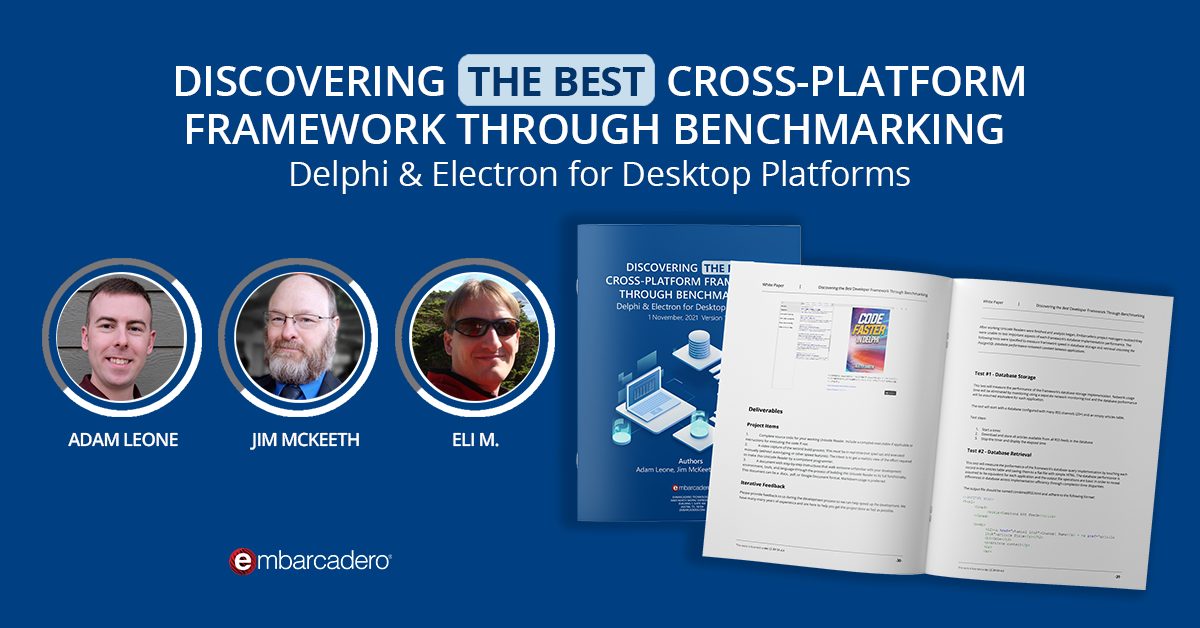
AI is taking over—not like “Terminator,” at least not yet, but by revolutionizing everything. AI is everywhere today, from business processes to consumer apps, and from spaceships to your toaster. And while everyone’s buzzing about AI in the cloud and AI in web apps, there is a hidden gem, a space where AI is quietly waiting to flex its muscles: desktop applications. As it turns out, desktop apps have a significant advantage, especially when managing AI-powered workflows.
This is especially important for Delphi, C++, and, increasingly, Python developers in RAD Studio. You are the wizards of desktop apps! Fewer people build desktop apps today, and many young developers have no idea how. The good news is that our tools make this easier.
Starting with RAD Studio 12.2, our focus on AI enablement will accelerate. While the IDE will have more AI features, we will focus on figuring out how to differentiate native development. We will need your help with this. Together, we will capture the incredible opportunity to power-charge and grow our community with AI!

Desktop vs. Web Apps: The Showdown
In the epic battle between desktop and web apps, comparing the two is like comparing a Swiss Army knife to a cheap plastic fork you get with takeout. Yes, web apps are functional, but their dependency on browsers and servers limits them. They guide you along a preset narrow path, as if they’re saying, “That was nice; now get back in line.”
Desktop apps are different. They say, “Here, take the wheel. Want to jump between five tasks as you work? No problem! Want to have 20 Photoshop tabs open while rendering a video? Go for it, champ!”
Desktop apps offer way more flexibility and customization. They handle complex workflows that would knock a web app out in the corner. And this is precisely what AI needs—an environment that can handle both the brainy AI stuff and the unpredictable human stuff, all without breaking a sweat.
Why Desktop Apps Are the Best Sidekick for AI
In addition to becoming our trusted co-pilot in more applications, AI is also introducing a new layer of workflows. It’s like having your very own Jarvis but without the snark. There is the primary workflow, where humans do their thing, like typing, clicking, or pretending to understand Excel formulas. Then there is the AI-assisted workflow, where the AI works in the background like a helpful but slightly over-enthusiastic intern.
AI workflows need flexibility. They’re analyzing data and context and making suggestions, maybe even cracking jokes. Okay, perhaps not jokes just yet, but you get the idea. The point is that AI needs room to breathe, adapt, and occasionally tell you you’re wrong in a polite, thinly veiled, robotic way.
Web apps, constrained by browser limitations, are ineffective at managing these dynamic interactions. On the other hand, desktop apps handle complexity, parallel processing, and random shifts in direction with ease, like that friend who’s always ready for an impromptu road trip.
Take an AI-powered design tool, for example. You’re busy sketching out your next brilliant visual masterpiece, and suddenly, the AI swoops in to say, “Hey, do you want me to fix that color scheme?” or “You’ve used Comic Sans fonts again; maybe you need a break.”
Real-time collaboration between user and AI needs a workspace that’s not bogged down by the server lag or browser compatibility issues that plague web apps. Desktop apps have the horsepower to run both the human and AI sides of things without making you feel like you’re stuck with a buffering video in 2004.
The Gaming Industry: The Grandmasters of Desktop Application Complexity
The best proof of the supremacy of desktop apps is found in the gaming industry, the high-stakes, never-sleeping champion of complex workflows.
Despite the rise of cloud gaming and mobile platforms, desktop gaming is still the reigning champ. Why? Because desktop applications can handle massive amounts of real-time processing and still offer a slick, immersive experience.
Take a modern strategy game. You’re managing your empire’s economy, deploying troops, and negotiating peace deals (or starting wars).
Meanwhile, the game’s embedded AI is watching everything you do and reacting to your every move, like the world’s creepiest omnipresent villain. The whole experience is seamless and responsive, and you never feel like you’re waiting for the server to catch up.
Now imagine this kind of fluid, real-time AI assistance in other areas—like an AI-powered finance tool or design app.
Desktop apps have the performance and flexibility to handle these complex interactions, and this makes them the perfect playground for AI-driven workflows. They’re fast, they’re adaptable, and they don’t crash when you throw too much at them.
Real-World Examples: AI Flexing in Desktop Applications
Let’s leave the world of virtual empires for a moment and explore how desktop apps are already getting cozy with AI in real life:
- Adobe Photoshop: Yep, that tool no one seems to know how to fully use. Photoshop’s AI assistant, “Adobe Sensei”, helps users with everything from auto-selecting objects (because nobody’s got time to draw tiny lines around every leaf in a tree) to colorizing old photos and even making predictive edits. It’s like having a mini-artist at your side who’s smarter than you, but won’t steal the credit.
- Autodesk Maya: Ever tried rigging a 3D character for animation? It’s like trying to do yoga with a broken back. Luckily, Maya’s AI tools handle some of the heavy lifting, like auto-rigging models. You the artist can do the creative stuff while the AI figures out how to make sure your character’s arm doesn’t bend like a pretzel. It’s teamwork at its finest—and, you guessed it, it’s best handled in a desktop app.
- Microsoft Excel: Even the king of spreadsheets is getting in on the AI action. Excel’s AI assistant, “Ideas,” takes your pile of confusing numbers and turns it into helpful insights, trends, and visualizations. It’s like having a data scientist in your corner, whispering “here’s the trendline you’re looking for.” Excel does all this while letting you wrestle with those VLOOKUPs in real-time—again, without browser lag or server-side delays.
The Future of AI and Desktop Applications: Ready to Flex?
As AI takes on a more significant role in how we work and create, it will need a platform that can keep up with its boundless potential, and web apps might not cut it. With their muscle and agility, desktop apps offer the perfect environment for complex AI workflows. Whether you’re designing the next great product, analyzing reams of data, or conquering virtual kingdoms, desktop applications give AI the freedom to work its magic without constraint.
For developers, businesses, and anyone looking to make the most of AI, desktop applications represent an untapped goldmine of potential. Before you close that desktop app and default back to the web, consider that your AI assistant deserves a little more space to breathe.
After all, if we’re going to work with AI side-by-side, it might as well be in an environment where it can truly shine—and maybe even crack a joke or two along the way.
Design. Code. Compile. Deploy.
Start Free Trial Upgrade Today
Free Delphi Community Edition Free C++Builder Community Edition





